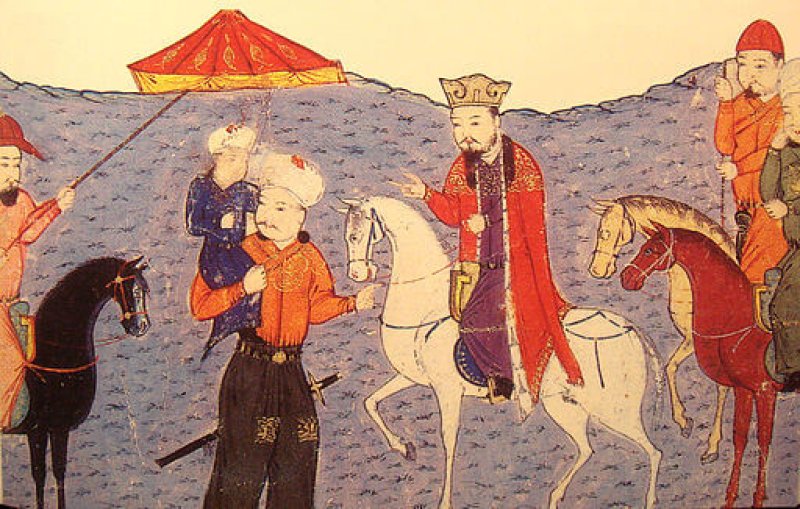In 2003 the first paper documenting Mongol ruler Genghis Khan’s extraordinary genetic contribution to the world was published. The finding added a twist to the already extensive information historians and anthropologists had about his creation of the largest contiguous empire in history: Khan was not just a great ruler, he and his generals were prolific fathers as well.
Scientists documented his reproductive reach by tracing the Y-chromosome that nearly 8 percent of males living in areas conquered by Khan still carry. National Geographic called it an example of ‘extreme natural selection’ at the time:
“This is a clear example that culture plays a very big role in patterns of genetic variation and diversity in human populations,” said geneticist Spencer Wells, one of the 23 co-authors of the paper. “It’s the first documented case when human culture has caused a single genetic lineage to increase to such an enormous extent in just a few hundred years.”
But one of the original study’s author backtracked a bit lately, according to anthropologist Gregory Cochran, by saying that the genetic data can’t exactly pinpoint Khan as the originator of that chromosome. Cochran took to his blog to chide the field as a whole for not taking advantage of other avenues of science, particularly history and anthropology, that can illuminate genetic data. The oversight is not just limited to the Khan effect:
It seems to me that this error stems from geneticists thinking that genetic data is the only real data: sloppy genetic time estimates trump precise historical dates. In much the same way, people (using the old too-high mutation rate) estimated that the split with Neanderthals was ~300,000 years ago, even though the fossil record clearly showed hominids in Europe shambling towards Neanderhood half a million years ago. The new, lower estimates of the mutation rate have reconciled genetic and paleontological evidence on the split time – but the geneticists should have realized that there was an inconsistency.
Although the historical counts for Neanderthal homo sapien interaction are a bit lacking, there are other, better documented examples of how human behavior became an ‘extreme driver of natural selection’ like historical economist Gregory Clark’s survival of the richest, or how the English upper-class prospered and reproduced so quickly and the rapid development of Ashkenazi Jews.
Blending together the historical and genetic records for these events will be the best way to understand them. And, data generated from these analyses will help inform further study of events for which there is not robust historical data, like that of the Neanderthal’s demise.
Meredith Knight is a blogger for Genetic Literacy Project and a freelance science and health writer in Austin, Texas. Follow her @meremereknight.
Additional Resources:
- We owe it all to superstud Genghis, Guardian
- Ashkenazi Jewish women descended mostly from Italian converts, new study asserts, Genetic Literacy Project
- Not out of Sheba, Discover































